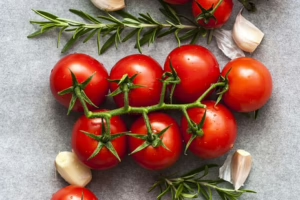Festive Sips: Creative Drink Ideas for Your Holiday Gatherings
When the holiday season rolls around, it brings with it a sense of joy, togetherness, and celebration. One of the best ways to elevate your gatherings during this festive time is with creatively crafted drinks. From spirited cocktails to cozy non-alcoholic beverages, festive sips can set the mood and enchant your guests. In this article, we will explore a variety of creative drink ideas to spice up your holiday gatherings, complete with recipes, tips, and special touches to make your drinks memorable.
1. The Power of Presentation
The Importance of Aesthetics
Before we delve into the drink recipes, let’s talk about presentation. The way a drink is served can significantly enhance its appeal. Invest in beautiful glassware and consider garnishes such as fresh herbs, fruits, or seasonal decorations. Even a simple cocktail can look extravagant with the right touches.
- Glassware: Use stemless wine glasses for a modern look or vintage crystal for a touch of elegance.
- Garnishes: Fresh herbs like rosemary and mint or seasonal fruits like pomegranate seeds and cranberries can add color and flavor.
- Rimmed Glasses: Consider rimming glasses with sugar, salt, or spices for an extra flair.
Thoughtful Recipes
With an emphasis on both flavor and presentation, let’s explore some festive drink recipes that will impress your guests.
2. Seasonal Cocktails
2.1. Spiced Apple Cider Sangria
Ingredients:
- 1 bottle of dry white wine
- 4 cups apple cider
- 1 cup brandy
- 2 cups sliced apples
- 1 cup cranberries
- 2 cinnamon sticks
- Star anise for garnish
Instructions:
- In a large pitcher, combine the wine, apple cider, and brandy.
- Add the sliced apples, cranberries, and cinnamon sticks.
- Let the mixture chill in the refrigerator for at least two hours.
- Serve over ice in glasses, garnished with a star anise.
This delightful sangria captures the essence of fall and winter. The combination of wine, cider, and brandy creates a harmonious balance of flavors.
2.2. Gingerbread Martini
Ingredients:
- 2 oz vodka
- 1 oz coffee liqueur
- 1 oz gingerbread syrup (homemade or store-bought)
- Whipped cream for garnish
- Crushed graham crackers for rim
Instructions:
- Rim the martini glass with crushed graham crackers.
- In a shaker filled with ice, combine vodka, coffee liqueur, and gingerbread syrup.
- Shake well and strain into the prepared glass.
- Top with whipped cream.
For a more festive feel, sprinkle some nutmeg or cinnamon on the whipped cream.
2.3. Pomegranate Prosecco Punch
Ingredients:
- 1 bottle Prosecco
- 2 cups pomegranate juice
- 1 cup club soda
- Pomegranate seeds and lime wheels for garnish
Instructions:
- In a punch bowl, mix pomegranate juice and club soda.
- Slowly pour in the Prosecco.
- Add pomegranate seeds and lime wheels for garnish.
This drink has a celebratory feel and is perfect for toasting with friends and family.
3. Cozy Non-Alcoholic Options
Not everyone may want to indulge in alcoholic beverages, so having a variety of non-alcoholic options is essential.
3.1. Festive Hot Chocolate Bar
Ingredients:
- 4 cups milk (or a non-dairy alternative)
- 1 cup heavy cream
- 1 cup chocolate chips
- Various toppings: whipped cream, peppermints, marshmallows, and flavored syrups
Instructions:
- In a saucepan, heat milk and cream gently until warm.
- Stir in the chocolate chips until melted and smooth.
- Set up a hot chocolate bar with toppings so guests can customize their drinks.
This option is comforting and can be made extra special with flavors like peppermint or salted caramel.
3.2. Cranberry Sparkler
Ingredients:
- 2 cups cranberry juice
- 1 cup sparkling water
- Fresh cranberries and mint for garnish
Instructions:
- In a pitcher, mix cranberry juice and sparkling water.
- Pour into glasses and add fresh cranberries and mint for garnish.
The sparkling water gives it a festive fizz, making it suitable for all ages.
3.3. Chai Spice Tea Latte
Ingredients:
- 4 cups water
- 4 chai tea bags
- 1 cup milk (or non-dairy alternative)
- Sweetener to taste
Instructions:
- Boil water and steep the chai tea bags for 10 minutes.
- Heat the milk separately and froth if desired.
- Mix both and sweeten according to taste.
This warm drink is perfect for chilly evenings and full of spices that evoke the holidays.
4. Winter Warmers
4.1. Classic Mulled Wine
Ingredients:
- 1 bottle red wine
- 1/4 cup brandy
- 1/4 cup honey
- 2 oranges (one sliced, one juiced)
- 2 cinnamon sticks
- 5 cloves
Instructions:
- In a saucepan, combine wine, brandy, honey, orange juice, spices, and sliced oranges.
- Heat gently without boiling for about 20 minutes.
- Strain and serve warm.
Mulled wine is the epitome of holiday comfort, perfect for cozying up by the fire.
4.2. Irish Coffee
Ingredients:
- 1 cup hot brewed coffee
- 1 oz Irish whiskey
- 1-2 tsp sugar (to taste)
- Heavy cream for topping
Instructions:
- In a sturdy glass, add hot coffee and sugar, stirring until dissolved.
- Stir in the Irish whiskey.
- Float heavy cream on top by pouring it over the back of a spoon.
This drink offers warmth and a little kick, ideal for holiday gatherings.
5. Themed Drink Stations
Creating a themed drink station can add a vibrant touch to your party. Here are a few ideas:
5.1. DIY Mimosa Bar
Set up a table with different juices (orange, cranberry, mango) and a selection of sparkling wines. Provide various garnishes like fresh fruit and herbs.
5.2. Hot Beverage Station
Aside from the hot chocolate, include coffee, teas, and spices with various sweeteners and creamers.
5.3. Cocktail Shaker Station
Allow guests to mix their cocktails with pre-measured ingredients. Provide recipe cards for signature drinks to simplify the process.
6. Seasonal Ingredients
Incorporate seasonal ingredients to elevate your drinks. Here are a few that can easily be added to your repertoire:
- Cranberries: Perfect for garnishing or infusing drinks.
- Apples: Both fresh slices and apple cider work wonderfully for cocktails and punches.
- Cinnamon and Nutmeg: Classic spices that add warmth to various beverages.
- Herbs: Fresh sprigs of rosemary and mint can transform your presentation and flavor profile.
7. Bringing It All Together
As you prepare for your gatherings, remember that the best drinks are those that reflect the joy of the season and bring people together. Combine flavors and presentations with a warm ambiance—string lights, cozy seating, and festive music—to create lasting memories.
Final Touches
- Signature Cocktail: Make a signature drink for your gathering that represents your style.
- Send Guests Home with a Gift: Consider sending guests home with a small jar of homemade syrup or a festive drink mix to enjoy later.
The right drinks can turn an ordinary holiday gathering into an extraordinary celebration. Cheers to a festive season filled with joy, laughter, and, of course, delightful sips!
References
- [1] Smith, J. (2021). Creative Cocktails for Every Occasion. Beverage Journal.
- [2] Thompson, L. (2022). The Art of Hospitality: How to Host Memorable Events. Event Planner Weekly.
- [3] Johnson, H. (2020). Seasonal Ingredients for the Perfect Party Drinks. Culinary Arts Magazine.


























Add Comment